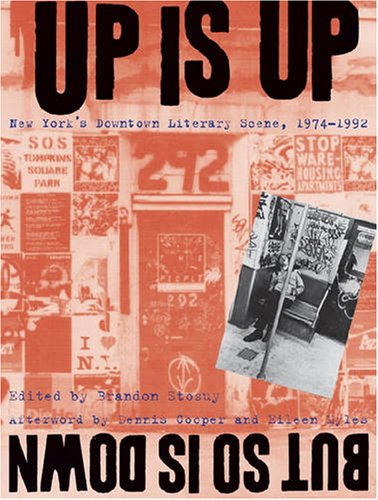Katherine Hirt: When Machines Play Chopin: Musical Spirit and Automation in Nineteenth-Century German Literature (2010)
Filed under book | Tags: · 1800s, aesthetics, android, automation, history of literature, language, literature, machine, mechanics, music, music history, musical instruments, philosophy, phonograph

“When Machines Play Chopin brings together music aesthetics, performance practices, and the history of automated musical instruments in nineteenth-century German literature. Philosophers defined music as a direct expression of human emotion while soloists competed with one another to display machine-like technical perfection at their instruments. This book looks at this paradox between thinking about and practicing music to show what three literary works say about automation and the sublime in art.”
Publisher De Gruyter, 2010
Interdisciplinary German Cultural Studies series, 8
ISBN 3110232405, 9783110232400
170 pages
via alcibiades_socrates
Abstract of the thesis (2008)
Comment (0)Shamil Jeppie, Souleymane Bachir Diagne (eds.): The Meanings of Timbuktu (2008)
Filed under book | Tags: · africa, book, calligraphy, education, history of literature, islam, library, literature, paper

In a joint project between South Africa and Mali, a library to preserve more than 200 000 Arabic and West African manuscripts dating from the 13th to the 19th centuries is currently under construction. It is the first official cultural project of the New Partnership for Africa’s Development (Nepad), the socio-economic development plan of the African Union, and when the library is built, the cultural role of Timbuktu will be revived, as it becomes the safehaven for the treasured manuscripts. The manuscripts prove that Africa had a rich legacy of written history, long before western colonisers set foot on the continent.
This volume, authored by leading international scholars, begins to sketch the ‘meaning’ of Timbuktu within the context of the intellectual history of West Africa, in particular, and of the African continent, in general. The book covers four broad areas: Part I provides an introduction to the region; outlines what archaeology can tell us of its history, examines the paper and various calligraphic styles used in the manuscripts; and explains how ancient institutions of scholarship functioned. Part II begins to analyse what the manuscripts can tell us of African history. Part III offers insight into the lives and works of just a few of the many scholars who achieved renown in the region and beyond. Part IV provides a glimpse into Timbuktu’s libraries and private collections. Part V looks at the written legacy of the eastern half of Africa, which like that of the western region, is often ignored.
A fascinating read for anyone who wishes to gain an understanding of the aura of mystique and legend that surrounds Timbuktu. The Meanings of Timbuktu strives to contextualize and clarify the importance of efforts to preserve Timbuktu’s manuscripts for Mali, for Africa and for the intellectual world.
Publisher HSRC, Cape Town, in association with CODESRIA, Dakar, 2008
Open Access
ISBN 0796922047, 139780796922045
416 pages
Review (David Robinson, H-SAfrica, 2009)
Publisher (HSRC)
Publisher (CODESRIA)
PDF (single PDF)
PDF (PDF chapters)
Brandon Stosuy (ed.): Up Is Up, But So Is Down: New York’s Downtown Literary Scene, 1974-1992 (2006)
Filed under book | Tags: · 1970s, 1980s, 1990s, art, diy, history of literature, literature, music, new york, poetry, publishing, theatre

“Sometime after Andy Warhol’s heyday but before Soho became a tourist trap, a group of poets, punk rockers, guerilla journalists, graffiti artists, writers, and activists transformed lower Manhattan into an artistic scene so diverse it became known simply as “Downtown.“ Willfully unpolished and subversively intelligent, figures such as Spalding Gray, Kathy Acker, Richard Hell, David Wojnarowicz, Lynne Tillman, Miguel Piñero, and Eric Bogosian broke free from mainstream publishing to produce a flood of fiction, poetry, experimental theater, art, and music that breathed the life of the street.
The first book to capture the spontaneity of the Downtown literary scene, Up Is Up, But So Is Down collects more than 125 images and over 80 texts that encompass the most vital work produced between 1974 and 1992. Reflecting the unconventional genres that marked this period, the book includes flyers, zines, newsprint weeklies, book covers, and photographs of people and the city, many of them here made available to readers outside the scene for the first time. The book’s striking and quirky design—complete with 2-color interior—brings each of these unique documents and images to life.
Brandon Stosuy arranges this hugely varied material chronologically to illustrate the dynamic views at play. He takes us from poetry readings in Alphabet City to happenings at Darinka, a Lower East Side apartment and performance space, to the St. Mark’s Bookshop, unofficial crossroads of the counterculture, where home-printed copies of the latest zines were sold in Ziploc bags. Often attacking the bourgeois irony epitomized by the New Yorker’s short fiction, Downtown writers played ebulliently with form and content, sex and language, producing work that depicted the underbelly of real life.
With an afterword by Downtown icons Dennis Cooper and Eileen Myles, Up Is Up, But So Is Down gathers almost twenty years of New York City’s smartest and most explosive—as well as hard to find—writing, providing an indispensable archive of one of the most exciting artistic scenes in U.S. history.”
With an afterword by Dennis Cooper and Eileen Myles
Publisher NYU Press, 2006
ISBN 9780814740118
500 pages
Downtown Collection at NYU’s Fales Library
Reviews: Ed Halter (Village Voice, 2006), Meghan O’Rourke (New York Times, 2006), Tim W. Brown (Columbia Journal of American Studies, n.d).
Commentary: Cynthia Carr (New York Times, 2006), Peter Cherches (2006).
PDF (39 MB, updated on 2019-8-23)
Comments (2)
